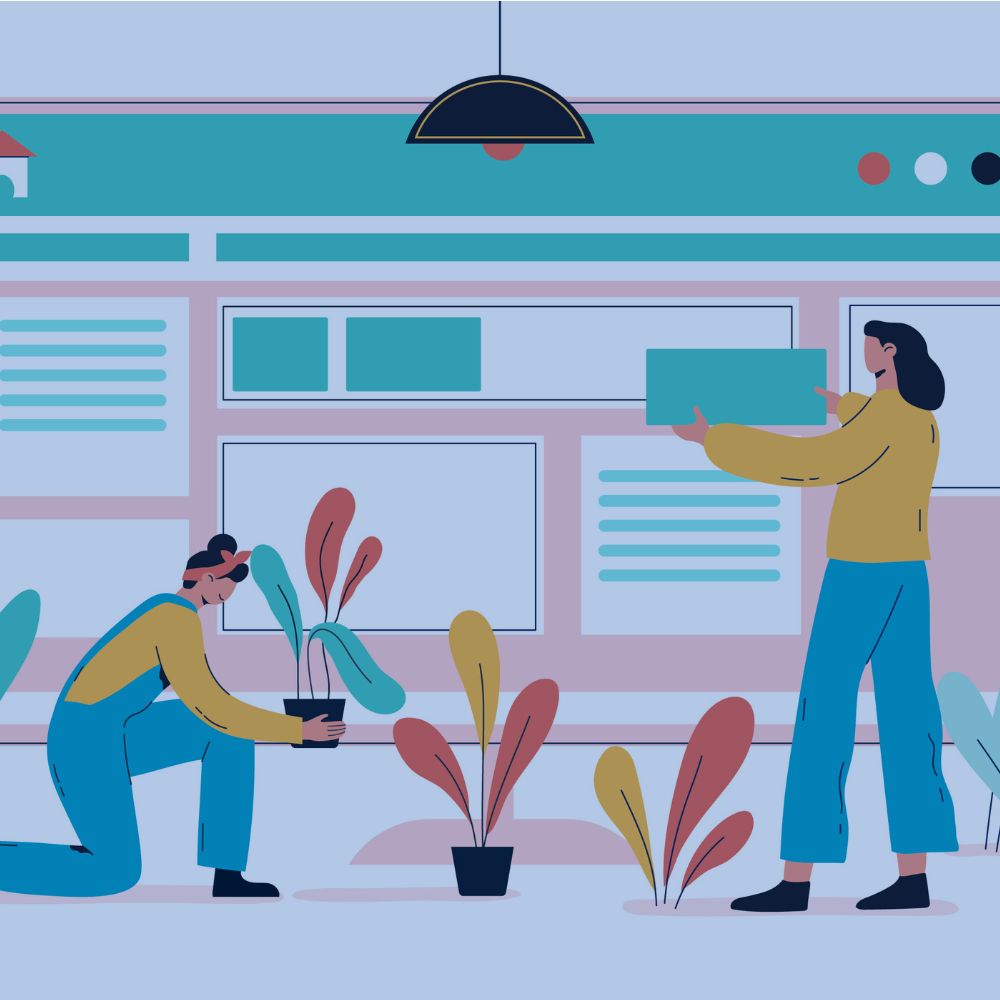
Why can a successful campaign stop working?
Read about the real reason behind failed ad campaigns. We explain how your goals and the authenticity of your creative assets are the key to success in digital marketing.

Interview multiple candidates
Lorem ipsum dolor sit amet, consectetur adipiscing elit proin mi pellentesque lorem turpis feugiat non sed sed sed aliquam lectus sodales gravida turpis maassa odio faucibus accumsan turpis nulla tellus purus ut cursus lorem in pellentesque risus turpis eget quam eu nunc sed diam.
Search for the right experience
Lorem ipsum dolor sit amet, consectetur adipiscing elit proin mi pellentesque lorem turpis feugiat non sed sed sed aliquam lectus sodales gravida turpis maassa odio.
- Lorem ipsum dolor sit amet, consectetur adipiscing elit.
- Porttitor nibh est vulputate vitae sem vitae.
- Netus vestibulum dignissim scelerisque vitae.
- Amet tellus nisl risus lorem vulputate velit eget.

Ask for past work examples & results
Lorem ipsum dolor sit amet, consectetur adipiscing elit consectetur in proin mattis enim posuere maecenas non magna mauris, feugiat montes, porttitor eget nulla id.
- Lorem ipsum dolor sit amet, consectetur adipiscing elit.
- Netus vestibulum dignissim scelerisque vitae.
- Porttitor nibh est vulputate vitae sem vitae.
- Amet tellus nisl risus lorem vulputate velit eget.
Vet candidates & ask for past references before hiring
Lorem ipsum dolor sit amet, consectetur adipiscing elit ut suspendisse convallis enim tincidunt nunc condimentum facilisi accumsan tempor donec dolor malesuada vestibulum in sed sed morbi accumsan tristique turpis vivamus non velit euismod.
“Lorem ipsum dolor sit amet, consectetur adipiscing elit nunc gravida purus urna, ipsum eu morbi in enim”
Once you hire them, give them access for all tools & resources for success
Lorem ipsum dolor sit amet, consectetur adipiscing elit ut suspendisse convallis enim tincidunt nunc condimentum facilisi accumsan tempor donec dolor malesuada vestibulum in sed sed morbi accumsan tristique turpis vivamus non velit euismod.
If you've invested time and money in digital advertising, this has probably happened to you: you launch a campaign, see registrations or sales start to come in, get excited... and suddenly, everything stops. As if someone flipped a switch.
The frustration is huge. You wonder if the algorithm changed, if you did something wrong, or if people got tired of you. And while technical details can play a role, the real problem is usually much simpler than it seems. It's not a glitch in the Matrix, but a strategic mistake.
In my mentoring sessions, this is one of the topics we discuss most often. People focus on metrics, clicks, and the Facebook Pixel, and they forget about the fundamental pillars that truly make a campaign work.
My goal today is for you to change your perspective. I want you to see your ad campaigns not as a mysterious machine, but as a strategic conversation with your audience. And in that conversation, clarity and authenticity are your best weapons.
The problem with a confused mind: one ad, one goal
The first big mistake I see, over and over again, is that an ad tries to achieve too many things at once. It's like giving your best friend three different and contradictory instructions at the same time. What do you expect them to do? They'll get confused, they'll freeze, and in the end, they won't do anything.
The same thing happens with ads. The platform's algorithm (be it Facebook, Instagram, or any other) is incredibly smart, but it needs a clear and concise instruction to give you the best results. When you create a campaign, the platform asks you, "What is your objective?" And it gives you several options:
- Reach: Have your ad reach the most people possible.
- Engagement: Get people to comment, share, and like your post.
- Registrations: Get people to sign up for your newsletter, a webinar, or download an ebook.
- Sales: Get people to buy your product or service.
Each of these objectives is a different path. If your goal is to sell, but your ad is designed to generate comments, the algorithm will get confused. It will give you what you asked for: lots of comments, but few sales.
I've seen campaigns that combine objectives; for example, they have an ad that goes to a webinar (registration), but at the same time they want people to buy a product (sale). The algorithm doesn't know which audience to prioritize. The one more likely to register or the one more likely to buy? And in the end, the result is mediocre on both fronts.
That's why my number one piece of advice is: one ad, one goal. If you want people to register, everything in your ad should be optimized for that registration. The text, the video, the image, the call-to-action button. Everything should point in that direction.
The audience is your judge: the myth of perfection
Here comes one of the hardest lessons to accept, but also one of the most liberating: your opinion on what makes a good ad doesn't matter.
As wellness professionals, we are often perfectionists. We strive to have the best lighting, impeccable sound, and a perfectly edited video. And while that has its place, the reality is that often, the most authentic and "homemade" ads are the ones that work best.
In one of my sessions, someone shared a finding that I thought was great: an ad they recorded informally, with their phone in the car, brought them the most registrations. Why? Because it felt real. It felt as if you were talking directly to that person, without filters or pretense.
People aren't on Instagram or Facebook to watch a TV commercial. They're there to connect with people, to see reality. And when you talk to them from your car, from your home, with your coffee in hand, you create an emotional connection that perfection rarely achieves. The audience decides whether an ad is good or not, and they do it with their clicks, their comments, and their actions.
So, the big takeaway here is that digital marketing is a game of trial and error. It's not about guessing, it's about experimenting. You put forth your hypotheses about what you think will work, but in the end, it's your audience that gives you the answers with their behavior.
A/B testing: the language of your audience
Now that you know your audience has the final say, the question is: how do I ask them what they want? The answer is A/B testing.
A/B testing, also known as split testing, is a technique that allows you to compare two versions of an ad to see which one works better. It's not a tool exclusive to experts; it's something you can do yourself with a bit of strategy.
Think of your ad as a recipe. There are many ingredients you can change to see which one people like best. The three most important for A/B testing are:
- The Creative: This is the visual part of your ad.
- Option A (Professional): A studio photo with good lighting or a video recorded with professional equipment.
- Option B (Authentic): A smiling selfie at your desk or a video of you talking directly to your phone camera, unedited.
- Test: Launch two ads that are identical in every way (audience, budget, objective), but with different creative assets. And observe which one has more engagement or more registrations.
- The Message (Copy): This is the text that goes with your ad.
- Option A (Long Story): A text of three or four paragraphs that tells a personal story or a success case.
- Option B (Short and Direct): A text of one or two paragraphs that goes straight to the problem, offers a solution, and tells people what to do.
- Test: Do people in your niche stop to read stories or do they prefer quick information? Test it.
- The Audience: Although your overall audience is the same, you can test different angles to attract different segments.
- Option A (Specific Interests): An ad directed at people interested in "guided meditation" and "mindfulness."
- Option B (General Interests): An ad directed at people interested in "wellness," "mental health," and "therapy."
- Test: Which of the two audiences is more likely to interact with your ad?
The goal of A/B testing isn't to find a single answer forever. It's a process of continuous learning. It's a way of listening to what your audience is telling you through their actions. And, believe me, the answer is almost never what you expect.
Conclusion: strategy before technique
At the end of the day, your success in digital advertising isn't measured by how well you understand the backend of ads, but by how well you understand your audience.
If your campaign stopped working, don't panic. Stop, breathe, and ask yourself:
- Am I being clear with my objective?
- Is the ad designed for my audience or for my own perfectionism?
- Am I testing different approaches to see what works?
The key is to stop seeing advertising as a black box full of algorithms and confusing metrics. Instead, see it as a tool to amplify a message you already know works. Technology is just the vehicle, but you, with your knowledge and experience, are the one who has to know where to go.
So, the next time you face an ad that isn't working, don't worry. It's an opportunity to learn something new about your audience. And that, I assure you, is the most valuable lesson digital marketing can give you.
Related posts
Subscribe to my newsletter








